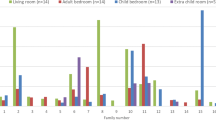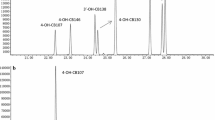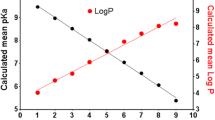Abstract
A wide variety of endocrine disrupting compounds (EDCs) with semi-volatile properties are emitted to indoor air and, thus, humans might get exposed to these compounds. Pet cats spend the major part of their lifetime at home and might integrate indoor contamination so that they could mirror the human exposure. Three classes of EDCs, polybromodiphenyl ethers (PBDEs), polychlorinated biphenyls (PCBs), and phthalates (PAEs), were simultaneously considered and quantified in the serum of cats (Felis silvestris catus) living in the Paris area (France). The main compound concentrations by decreasing importance order were as follows: for PAEs, di-n-butyl phthalate (79,900 ng L−1) next di-iso-butyl phthalate (53,200 ng L−1), di-iso-nonyl phthalate (43,800 ng L−1), and di-ethylhexyl phthalate (32,830 ng L−1); for PCBs, CB153 (1378 ng L−1) next CB52 (509 ng L−1), CB101 (355 ng L−1), CB110 (264 ng L−1), and CB118 (165 ng L−1); and for PBDEs, BDE 153/154 (35 ng L−1) next BDE47 (10.7 ng L−1). Total serum concentrations as mean ± standard deviation were 107 ± 98 μg L−1 for ∑9PAEs, 2799 ± 944 ng L−1 for ∑19PCBs, and 56 ± 21 ng L−1 for ∑9BDEs. The three chemical groups were found in cat food: 0.088 ng g−1 for ∑9BDEs, 1.7 ng g−1 for ∑19PCBs, and 2292 ng g−1 for ∑9PAEs and in indoor air: 0.063 ng m−3 for ∑9BDEs, 1.5 ng m−3 for ∑19PCBs, and 848 ng m−3 for ∑9PAEs. Contaminant intake by food ingestion was approximately 100-fold higher than that by indoor air inhalation.



Similar content being viewed by others
References
Akingbemi BT, Sottas CM, Koulova AI, Klinefelter GR, Hardy MP (2004) Inhibition of testicular steroidogenesis by the xenoestrogen bisphenol A is associated with reduced pituitary luteinizing hormone secretion and decreased steroidogenic enzyme gene expression in rat Leydig cells. Endocrinology 145:592–603
Ali N, Malik RN, Mehdi T, Eqani SAMAS, Javeed A, Neels H, Covaci A (2013) Organohalogenated contaminants (OHCs) in the serum and hair of pet cats and dogs: biosentinels of indoor pollution. Science of The Total Environment 449:29–36
Alliot F, Moreau-Guigon E, Bourges C, Desportes A, Teil M-J, Blanchard M, Chevreuil M (2014) A multi-residue method for characterization of endocrine disruptors in gaseous and particulate phases of ambient air. Atmos Environ 92:1–8
Anezaki K, Kannan N, Nakano T (2015) Polychlorinated biphenyl contamination of paints containing polycyclic- and naphthol AS-type pigments. Environ Sci Pollut Res 22:14478–14488
Bellingham M, Fiandanese N, Byers A, Cotinot C, Evans N, Pocar P, Amezaga M, Lea R, Sinclair K, Rhind S (2012) Effects of exposure to environmental chemicals during pregnancy on the development of the male and female reproductive axes. Reprod Domest Anim 47:15–22
Bellingham M, Amezaga MR, Mandon-Pepin B, Speers CJB, Kyle CE, Evans NP, Sharpe RM, Cotinot C, Rhind SM, Fowler PA (2013) Exposure to chemical cocktails before or after conception—the effect of timing on ovarian development. Mol Cell Endocrinol 376:156–172
Betts K (2007): PBDEs, cats and children. In: technology ESa (Hrsg.)
Beyer A, Biziuk M (2009): Environmental fate and global distribution of polychlorinated biphenyls, Reviews of Environmental Contamination and Toxicology Vol 201. Springer, pp. 137–158
Blanchard M, Teil M-J, Dargnat C, Alliot F, Chevreuil M (2013) Assessment of adult human exposure to phthalate esters in the urban centre of Paris (France). Bull Environ Contam Toxicol 90:91–96
Blanchard O, Glorennec P, Mercier F, Bonvallot N, Chevrier C, Ramalho O, Mandin C, Bot BL (2014) Semivolatile organic compounds in indoor air and settled dust in 30 French dwellings. Environ Sci Technol 48:3959–3969
Boas M, Frederiksen H, Feldt-Rasmussen U, Skakkebaek NE, Hegedus L, Hilsted L, Juul A, Main KM (2010) Childhood exposure to phthalates: associations with thyroid function, insulin-like growth factor I, and growth. Environ Health Perspect 118:1458–64
California Environmental Protection Agency (2006) Polybrominated diphenyl ethers: Recommendations to reduce exposure in California: A report of the Cal/EPA PBDE workgroup 2006. Sacramento, California, USA
Dahlberg A-K, Norrgran J, Hovander L, Bergman Å, Asplund L (2014) Recovery discrepancies of OH-PBDEs and polybromophenols in human plasma and cat serum versus herring and long-tailed duck plasma. Chemosphere 94:97–103
De Nardo P (2002) Animals as sentinels of environmental pollution. Epidemiol Prev 27:26–32
de Wit CA, Herzke D, Vorkamp K (2010) Brominated flame retardants in the Arctic environment—trends and new candidates. Science of The Total Environment 408:2885–2918
Deca-BDE 2012 Factsheet Brominated flame retardant. Bromine Science and Environmental Forum. http://www.bsef.com/uploads/Deca_factsheet_25-10-2012.pdf. Accessed 06 June 2015
Decree (July 08 2010): Arrêté du 8 juillet 2010 modifiant l'arrêté du 25 janvier 2010 relatif aux méthodes et critères d'évaluation de l'état écologique, de l'état chimique et du potentiel écologique des eaux de surface pris en application des articles R. 212–10, R. 212–11 et R. 212–18 du code de l'environnement. Legifrance
Destaillats H, Maddalena RL, Singer BC, Hodgson AT, McKone TE (2008) Indoor pollutants emitted by office equipment: a review of reported data and information needs. Atmos Environ 42:1371–1388
Diamond ML, Melymuk L, Csiszar SA, Robson M (2010) Estimation of PCB stocks, emissions, and urban fate: will our policies reduce concentrations and exposure? Environ Sci Technol 44:2777–83
Directive 2003/11/EC of the European Parliament and of the Council of 6 February 2003 amending for the 24th time Council Directive 76/769/EEC relating to restrictions on the marketing and use of certain dangerous substances and preparations (pentabromodiphenyl ether, octabromo-diphenyl ether)
Dirtu AC, Niessen SJ, Jorens PG, Covaci A (2013) Organohalogenated contaminants in domestic cats’ plasma in relation to spontaneous acromegaly and type 2 diabetes mellitus: a clue for endocrine disruption in humans? Environ Int 57:60–67
Dye JA, Venier M, Zhu L, Ward CR, Hites RA, Birnbaum LS (2007) Elevated PBDE levels in pet cats: sentinels for humans? Environ Sci Technol 41:6350–6356
Enriquez B, Manet C (2013) Le chat: sentinelle des facteurs environnementaux de perturbation endocrinienne. Environnement, Risques & Santé 12:160–164
EWG (2008) Polluted pets. High levels of toxic industrial chemicals contaminate cats and dogs. Environmental Working Group. http://www.ewg.org/research/polluted-pets
Ežerskis Z, Morkūnas V, Suman M, Simoneau C (2007) Analytical screening of polyadipates and other plasticisers in poly (vinyl chloride) gasket seals and in fatty food by gas chromatography–mass spectrometry. Anal Chim Acta 604:29–38
Fournier K, Glorennec P, Bonvallot N (2014) An exposure-based framework for grouping pollutants for a cumulative risk assessment approach: case study of indoor semi-volatile organic compounds. Environ Res 130:20–28
Fromme H, Körner W, Shahin N, Wanner A, Albrecht M, Boehmer S, Parlar H, Mayer R, Liebl B, Bolte G (2009) Human exposure to polybrominated diphenyl ethers (PBDE), as evidenced by data from a duplicate diet study, indoor air, house dust, and biomonitoring in Germany. Environ Int 35:1125–1135
German Federal Environmental Agency (2011) Substance monograph: phthalates - New and updated reference values for monoesters and oxidizes metabolites in urine of adults and children. Bundesgesundheitsbl 54:770–785
Guo W, Park JS, Wang Y, Gardner S, Baek C, Petreas M, Hooper K (2012) High polybrominated diphenyl ether levels in California house cats: house dust a primary source? Environ Toxicol Chem 31:301–306
Hazrati S, Harrad S (2006) Causes of variability in concentrations of polychlorinated biphenyls and polybrominated diphenyl ethers in indoor air. Environ Sci Technol 40:7584–7589
Inoue K, Kawaguchi M, Yamanaka R, Higuchi T, Ito R, Saito K, Nakazawa H (2005) Evaluation and analysis of exposure levels of di (2-ethylhexyl) phthalate from blood bags. Clin Chim Acta 358:159–166
Kim JS, Klosener J, Flor S, Peters TM, Ludewig G, Thorne PS, Robertson LW, Luthe G (2014) Toxicity assessment of air-delivered particle-bound polybrominated diphenyl ethers. Toxicology 317:31–9
Kunisue T, Nakanishi S, Watanabe M, Abe T, Nakatsu S, Kawauchi S, Sano A, Horii A, Kano Y, Tanabe S (2005) Contamination status and accumulation features of persistent organochlorines in pet dogs and cats from Japan. Environ Pollut 136:465–476
Kupryianchyk D, Hovander L, Jones B, Lindqvist NG, Eriksson S, Bergman A (2009) Hyperthyroidism, a new disease in cats—is it caused by exposure to environmental organic pollutants? Organohalogen Compd 71:2720–2725
Lafarge 2001: Principes, indications et mise en oeuvre pratique de l'oxygénothérapie chez les carnivores domestiques. Thèse de Doctorat Vétérinaire Thesis, Ecole Nationale Vétérinaire d’Alfort, Creteil, 76 pp
Langer P, Kočan A, Tajtáková M, Rádiková Ž, Petrík J, Koška J, Kšinantová L, Imrich R, Hučková M, Chovancová J (2007) Possible effects of persistent organochlorinated pollutants cocktail on thyroid hormone levels and pituitary–thyroid interrelations. Chemosphere 70:110–118
Lupton SJ, McGarrigle BP, Olson JR, Wood TD, Aga DS (2009) Human liver microsome-mediated metabolism of brominated diphenyl ethers 47, 99, and 153 and identification of their major metabolites. Chem Res Toxicol 22:1802–1809
Mankidy R, Wiseman S, Ma H, Giesy JP (2013) Biological impact of phthalates. Toxicol Lett 217:50–58
Meeker JD (2010) Exposure to environmental endocrine disrupting compounds and men’s health. Maturitas 66:236–241
Menichini E, Iacovella N, Monfredini F, Turrio-Baldassarri L (2007) Relationships between indoor and outdoor air pollution by carcinogenic PAHs and PCBs. Atmos Environ 41:9518–9529
Mizukawa H, Nomiyama K, Nakatsu S, Yachimori S, Hayashi T, Tashiro Y, Nagano Y, Tanabe S (2013) Species-specific differences in the accumulation features of organohalogen contaminants and their metabolites in the blood of Japanese terrestrial mammals. Environ Pollut 174:28–37
Moreau-Guigon E, Chevreuil M (2014) L’exposition humaine aux perturbateurs endocriniens via l’air ambiant : un risque sanitaire méconnu. Archives des Maladies Professionnelles et de l'Environnement 75:74–81
Norrgran J, Jones B, Lindquist N-G, Bergman Å (2012) Decabromobiphenyl, polybrominated diphenyl ethers, and brominated phenolic compounds in serum of cats diagnosed with the endocrine disease feline hyperthyroidism. Arch Environ Contam Toxicol 63:161–168
Potera C (2007) Chemical exposures: cats as sentinel species. Environ Health Perspect 115:A580
Rabinowitz P, Conti L (2013) Links among human health, animal health, and ecosystem health. Annu Rev Public Health 34:189–204
Rodenburg LA, Guo J, Du S, Cavallo GJ (2010) Evidence for unique and ubiquitous environmental sources of 3,3′-dichlorobiphenyl (PCB 11). Environ Sci Technol 44:2816–2821
Rudel RA, Perovich LJ (2009) Endocrine disrupting chemicals in indoor and outdoor air. Atmos Environ 43:170–181
Ruiz-Suarez N, Camacho M, Boada LD, Henriquez-Hernandez LA, Rial C, Valeron PF, Zumbado M, Gonzalez MA, Luzardo OP (2015) The assessment of daily dietary intake reveals the existence of a different pattern of bioaccumulation of chlorinated pollutants between domestic dogs and cats. Sci Total Environ 530–531:45–52
Rundell KW, Hoffman JR, Caviston R, Bulbulian R, Hollenbach AM (2007) Inhalation of ultrafine and fine particulate matter disrupts systemic vascular function. Inhal Toxicol 19:133–140
Schilling RJ, Steele GK, Harris AE, Donahue JF, Ing RT (1988) Canine serum levels of polychlorinated biphenyls (PCBs): a pilot study to evaluate the use of animal sentinels in environmental health. Archives of Environmental Health: An International Journal 43:218–221
Schmidt PL (2009) Companion animals as sentinels for public health. Veterinary Clinics of North America: Small Animal Practice 39:241–250
Schulz D, Petrick G, Duinker C (1989) Complete characterization of polychlorinated biphenyl congeners in commercial. Aroclor and Clophen mixture by multidimensinal gas chromatography-electron capture detection. Environ Sci Technol 23:852–859
Sharpe RM, Irvine DS (2004) How strong is the difference of a link between environmental chemicals and adverse effects on human reproductive health? Br Med J 328:447–450
Storelli MM, Storelli A, Barone G, Franchini D (2009) Accumulation of polychlorinated biphenyls and organochlorine pesticide in pet cats and dogs: assessment of toxicological status. Sci Total Environ 408:64–68
Thuresson K, Björklund JA, de Wit CA (2012) Tri-decabrominated diphenyl ethers and hexabromocyclododecane in indoor air and dust from Stockholm microenvironments 1. Levels and profiles. Sci Total Environ 414:713–721
Wormuth M, Scheringer M, Vollenweider M, Hungerbuhler K (2006) What are the sources of exposure to eight frequently used phthalic acid esters in Europeans? Risk Anal 26:803–24
Zhang X, Diamond ML, Robson M, Harrad S (2011) Sources, emissions, and fate of polybrominated diphenyl ethers and polychlorinated biphenyls indoors in Toronto, Canada. Environ Sci Technol 45:3268–3274
Acknowledgments
This work was supported by the Laboratoire Hydrologie et Environnement de l’Ecole Pratique des Hautes Etudes (EPHE). We wish to thank the CERCA and Prof. Fontbonne for their scientific assistance and for providing the cats used in this study. Technical assistance throughout this study was given by Catherine Bourges and Annie Desportes.
Author information
Authors and Affiliations
Corresponding author
Additional information
Responsible editor: Hongwen Sun
Highlights
1. Phthalates, polychlorinated biphenyls, and polybromodiphenyl ethers were quantified in cat serum, food, and indoor air.
2. Cat serum contamination levels were similar to those found in other European countries.
3. Relationships between contaminants in cat serum versus indoor air or cat food were shown.
4. Food intake was the prevailing contamination pathway.
Electronic supplementary material
Below is the link to the electronic supplementary material.
ESM 1
(DOC 638 kb)
Rights and permissions
About this article
Cite this article
Braouezec, C., Enriquez, B., Blanchard, M. et al. Cat serum contamination by phthalates, PCBs, and PBDEs versus food and indoor air. Environ Sci Pollut Res 23, 9574–9584 (2016). https://doi.org/10.1007/s11356-016-6063-0
Received:
Accepted:
Published:
Issue Date:
DOI: https://doi.org/10.1007/s11356-016-6063-0




